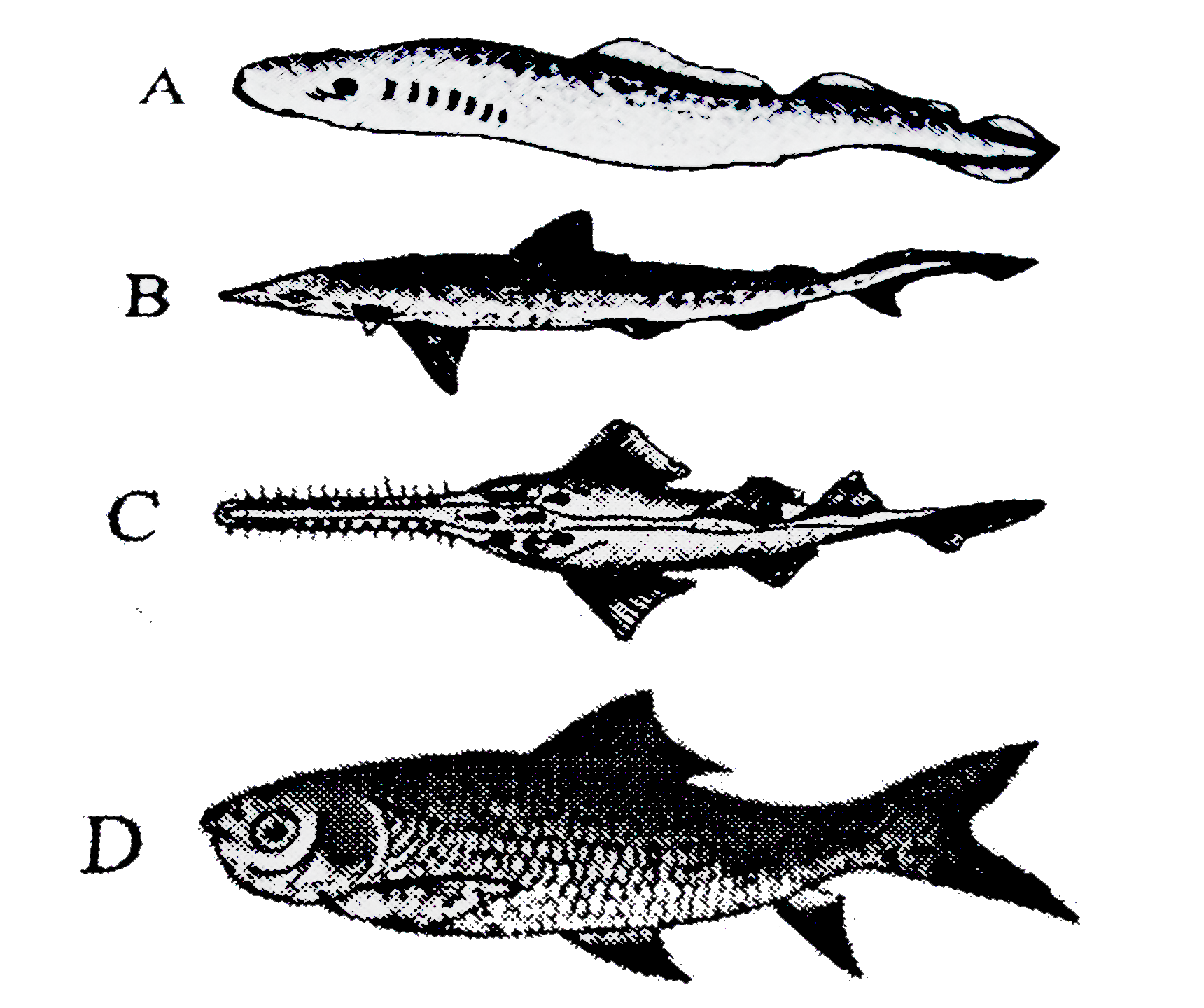Select the correct option in respect of characteristics of each group.
CyclostomesChondrichthyesOsteichthyes(i)Suking mouthVentral mouthTerminal mouth (ii)Scales absentPlacoid scalesCycloid/Ctenoid scales(iii)MarineMarineMarine adn freshwater(iv)6−15pairs of gills5−7pairs of gills without operculum4pairs of gills with operculum
(i) and (ii) are correct
(i) and (iv) are correct
Only (iii) is correct
All are correct.
The correct Answer is:D
Step by step video, text & image solution for Select the correct option in respect of characteristics of each group. {:("Cyclostomes","Chondrichthyes","Osteichthyes"),((i)"Suking mouth","Ventral mouth","Terminal mouth "),((ii)"Scales absent","Placoid scales","Cycloid/Ctenoid scales"),((iii)"Marine","Marine","Marine adn freshwater"),((iv)6-15"pairs of gills",5-7 "pairs of gills without operculum",4 "pairs of gills with operculum"):} by Biology experts to help you in doubts & scoring excellent marks in Class 11 exams.
Updated on:21/07/2023Topper's Solved these Questions
Similar Questions
Which of the following represents the correct combination without any exception
CharacteristicsClass(a)Mouth ventrcal, gills without operculum, skin with placoid scales, persistent notochordChondrichthyes(b)Sucking and circular mouth, jaws absent, integument without scales, paired appendagesCyclostomata(c)Body covered with feather, skin mosit and glandular, fore-limbs form wings, lungs from wings, lungs with air sacsAves(d)Mammary gland, hair on body, pinnae, two pair of limbsMammalia
View SolutionMatch column I with column II and select the correct option form the given codes.
Column IColumn IIA.Amphibia(i)Air bladderB.Mammals(ii)Cartilaginous notochordC.Chondrichthyes(iii)Mammary glandsD.Osteichthyes(iv)Pneumatic bonesE.Cyclostomata(v)Dual habitatF.Aves(vi)Sucking and circular mouth without jaws
View Solution
Knowledge Check
Which of the following is/are not the characteristics of the Class Osteichthyes?
(i) Body is streamlined and mouth is terminal.
(ii) Gills are convered by operculum.
(iii) Skin convered with cycloid and placoid scales.
(iv) Many of them are viviparous.A(iv) onlyB(iii) and (iv)C(i), (iii) and (iv)D(i) and (ii)Which of the following is/are not the characteristics of the Class Osteichthyes?
(i) Body is streamlined and mouth is terminal.
(ii) Gills are convered by operculum.
(iii) Skin convered with cycloid and placoid scales.
(iv) Many of them are viviparous.A(iv) onlyB(iii) and (iv)C(i), (iii) and (iv)D(i) and (ii)Cartilaginious fishes have
I. Scoroll valve II. Operculum
III. Placoid scale IV. Cycloid or ctenoid scales
Choose the correct option.AI and IIBII and IVCI and IIIDI, II and III
Select the difference which is wrongly written Cartilaginous fish -Bony fishes
(1) Operculum is absent - Operculum is present
(2) Fertilization is internal - Fertilization is external
(3) Posses 5-7 pair of gills - Posses 4 pair of gills
(4) Mostly oviparous - Mostly viviparous
View SolutionGive the answer of following questions by observatios from given figures:

(i). Which fish has air bladder?
(ii) which fish is known as saw fish?
(iii) which fish is cartilaginous fish?
(iv). Which animal is ectoparasite on true fishes?
(v) Which fish has paired fins?
(vi) which fishh has body skeleton?
(vii) Which fish has 4-pairs of gills?
(viii) Whch fis has operculum?
(ix) Which fishes are viviparous?
(x) Which fish lives in fresh water?
View SolutionSelect the option with a correct representation of an animal belonging to the below mentioned class of vertebrates.
I. The notochord is persisitent throughout life. The mouth is ventral.
II. The skin is moist without scales . The tail may be present.
III. 6 to 15 pairs of gill slits. Jaws absent.
IV. Viviparous usually. pinna present in most of the members.
View SolutionSelect the option with a correct representation of an animal to the below-mentioned class of vertebrates:
I. The jawless animal in which the body is devoid of scales and paired fins.
II. They have four pairs of gills that are covered by an operculum.
III. The body is covered by dry and cornified skin, epidermal scales or scutes.
IV. Skin is dry without glands and long bones are hollow with air cavities.
View SolutionConsider the following characteristic of fishes :-
(1) They have four pairs of gills which are covered by an operculum.
(2) They have air bladder which regulates buoyancy
(3) They are mostly viviparous and development is direct
(4) Their body is streamlined and covered with cycloid/ctenoid scales
Which of the above characteristics regarding bony fishes are correct?
View Solution
